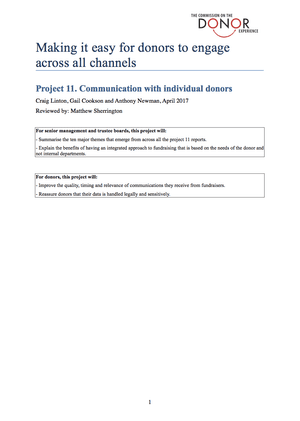CDE project 11: part 2 — case study
- Written by
- The Commission on the Donor Experience
- Added
- April 30, 2017
Taken from Fundraising Magazine – April 2017
Joe Jenkins, director of supporter impact and income at The Children’s Society explains their new integrate strategy to engage with new cohorts of supporters:
Our brief was to look more broadly at how the whole organisation worked with supporter engagement. Very early on we placed volunteering in the same directorate as fundraising and communications and we went on to develop a new strategic approach. So now we have a supporter engagement plan which looks at how the whole organisation delivers the supporter experience, whether through fundraising, volunteering or campaigning.
The whole strategy has been built around a focus on our supporters’ experiences, as opposed to organising ourselves around fundraising techniques, channels or functions.
We are still at the early stages of this transformation in our approach, but rather than looking at whatever product our supporters are engaged with, we are looking a what their journey looks like over time and how we can develop offers and activities to better engage them to add value. That has required our teams to work in an entirely different way; to plan very differently and employ whole new processes based around our supporters rather than our products.
We look at our supporters’ different interests and motivations and the ways in which people want to engage with us and define their relationship with us. That enables us to tailor our communications and engagement.
Integration was not necessarily a reaction to the current environment, rather the environment was the catalyst. It was part of recognising the changing demographics of donors.
Millennials and baby boomers are becoming the major cohorts of supporters and their expectations of charities are very different. They want better experiences. Our benchmarks should no longer be other charities, but rather eBay and Amazon. People expect frictionless, seamless and joined-up experience, and that requires charities to think in an entirely different way about how they engage.


















